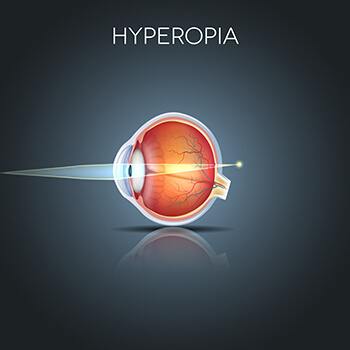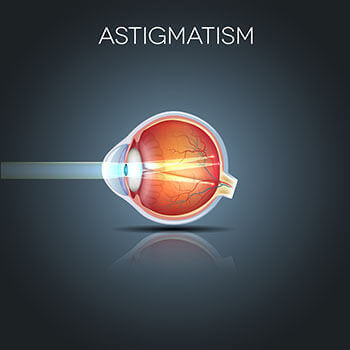Refractive errors are due to the eye not focusing light precisely on the retina. Patients with refractive errors require glasses or contacts to help focus the light in order to see well. Below are the different types of refractive errors:

Myopic individuals have difficulty seeing distant objects well and they are forced to wear glasses or contacts to see in the distance. Myopia is normally due to having a long eye and/or a steep cornea. There are many refractive surgery options for all levels of myopia.

Farsighted individuals typically develop difficulty seeing near objects which worsens in the late 30s and on. Hyperopia is due to the eye being too short. The eye’s cornea and lens are typically not strong enough to refract light onto the retina. Thus farsighted patients require glasses/contacts to help focus the light onto the retina in order to see near objects. Today there are multiple refractive surgery options to correct hyperopia.

Astigmatism is typically due to a cornea (window in front of eye) having a non-uniform level of steepness, causing light to be focused unevenly on the retina. Astigmatic patients often see images as blurry, shadowed or even doubled. One can have astigmatism in addition to myopia or hyperopia, or astigmatism itself can be the only refractive error. We have multiple options for the correction of astigmatism.

Presbyopia typically begins in a patient’s mid-40s. Presbyopia is due to the inevitable process where the eye’s natural lens loses its flexibility and cannot change shape to focus on near objects. To compensate for this difficulty, patients in their mid-40s notice that they often hold reading material further away to compensate for this loss of near vision. While presbyopia can be treated with simple reading glasses or bifocals/progressives, we have a number of ways to treat this universal condition including monovision contact lens, multifocal contact lenses, monovision laser vision correction or refractive lens exchange.